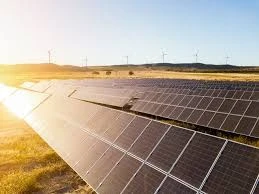monofacial vs bifacial solar
Monofacial vs. Bifacial Solar Panels A Comprehensive Comparison
When it comes to solar energy systems, choosing the right type of solar panel is crucial for maximizing efficiency and return on investment. Among the various options available, monofacial and bifacial solar panels are the two most widely discussed types. Both have distinct advantages and limitations, making it essential for potential users to understand the differences and potential benefits of each.
Monofacial Solar Panels
Monofacial solar panels are the traditional type, featuring cells that absorb sunlight and convert it into electricity on only one side. These panels are typically more familiar to consumers and are often installed on rooftops or within solar farms. One of the primary advantages of monofacial panels is their relatively lower cost compared to bifacial solutions. They are effective in a variety of environments, particularly in areas with ample sunlight.
However, monofacial panels have some limitations. Their efficiency is primarily dependent on direct sunlight exposure, which can be affected by surrounding objects like trees or buildings that cast shadows. Additionally, these panels typically do not capture reflected sunlight from the ground or other surfaces, which can limit their overall energy production.
monofacial vs bifacial solar

Bifacial Solar Panels
In contrast, bifacial solar panels are designed to capture sunlight from both sides. This innovative design allows them to harness not only direct sunlight but also reflected light from the ground. This capability increases their energy output, making them particularly efficient in certain environments, such as installations over white or reflective surfaces. Bifacial panels commonly provide higher energy yields, especially when paired with racking systems that elevate the panels above the ground to maximize reflection.
Despite these advantages, bifacial panels come with higher upfront costs and may require more complex mounting systems. Additionally, the performance boost from the rear side is highly dependent on the albedo (reflectivity) of the installation location. Therefore, they might not be suitable for all environments, particularly those with less reflective surfaces.
Conclusion
Ultimately, the choice between monofacial and bifacial solar panels depends on specific project requirements, installation locations, and budget considerations. Monofacial panels offer an economical option for standard solar energy production, while bifacial panels can provide significant advantages in energy yield, particularly in suitable conditions. Understanding the characteristics of each type is essential for making an informed decision that aligns with both environmental goals and financial expectations. As solar technology continues to evolve, ongoing advancements may further bolster the effectiveness and appeal of both monofacial and bifacial panels in the renewable energy market.
-
Navigating Off Grid Solar Inverter: From Use Cases to Trusted PartnersNewsAug.05,2025
-
Solar Edge String Inverter: A Wholesaler’s Guide to Inverter Technology SelectionNewsAug.05,2025
-
Microinverters: Revolutionizing Solar Energy UseNewsAug.05,2025
-
Future of Monocrystalline Solar Panel Efficiency: Latest Technological AdvancesNewsAug.05,2025
-
Solar Panels for House: A Complete Guide to Residential Solar EnergyNewsAug.05,2025
-
Panel Bifacial Performance in Snow and Low-Light ConditionsNewsAug.05,2025







